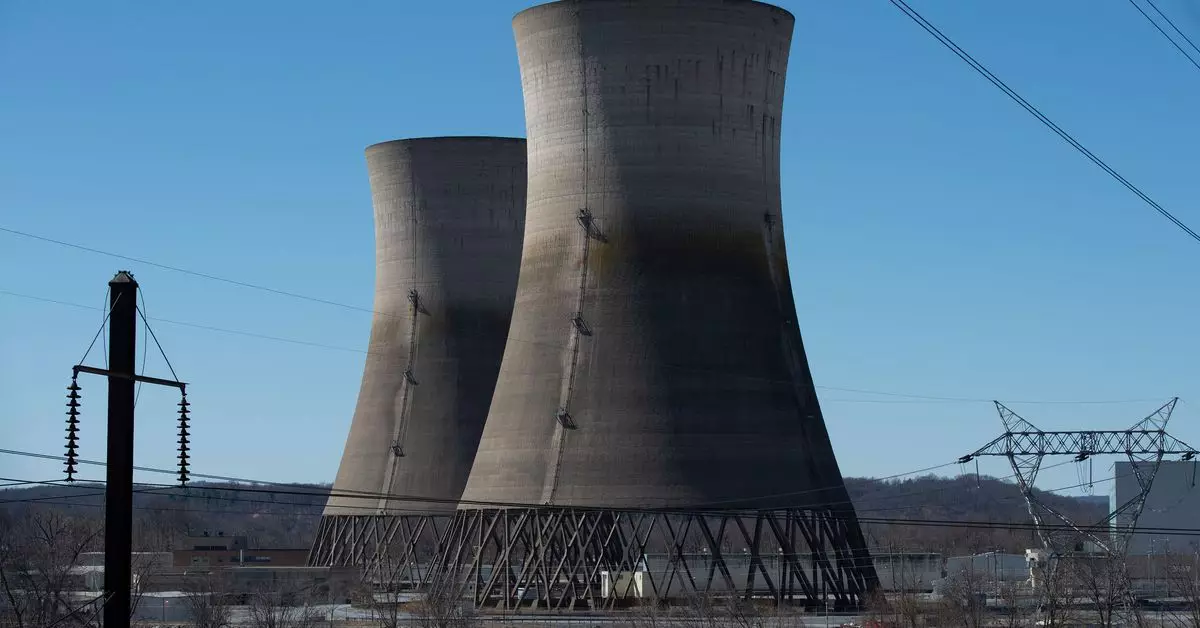In a significant development for both the tech industry and nuclear energy sector, Microsoft has recently announced a partnership with Constellation Energy, the owner of the Three Mile Island nuclear plant, to revive the facility for electricity generation. Tentatively set to recommence operations by 2028, this initiative symbolizes a robust intersection between technology’s rising energy demands and the necessity for sustainable power sources. Three Mile Island, notorious for the worst nuclear incident in U.S. history in 1979, has long been a focal point of scrutiny and concern. The plant’s reactor was decommissioned in 2019 due to economic factors, highlighting the ongoing challenges faced by traditional energy generation sectors.
The partnership is rooted in a power purchase agreement that would establish Microsoft as the exclusive purchaser of energy produced by the rejuvenated plant. This arrangement emphasizes the stratospheric energy requirements for Microsoft’s AI operations, which are integral to the company’s strategic vision. The anticipated output of 837 megawatts is no small feat; it has the potential to supply electricity to over 800,000 homes, revealing the scale at which modern data centers operate.
This ambitious plan is not merely a revival of an old facility but rather a pioneering shift in how major corporations approach energy consumption. Microsoft’s investment in renewable and clean energy sources is not only an environmental imperative but an operational necessity. As companies continue seeking innovative solutions to their digital and energy consumption needs, partnerships like this one may very well become essential templates for future collaborations between tech giants and energy providers.
The renamed Crane Clean Energy Center stands as a testament to the legacy of Chris Crane, former CEO of Exelon, embodying both a tribute to leadership in energy and a commitment to future generations of clean power. Microsoft’s pursuit of carbon-neutrality by 2025 is a driving force behind this initiative; however, recent reports suggest that their emissions related to AI-focused expansions have been on the rise. This prospective energy source from Three Mile Island could pivot Microsoft back toward its environmental goals while simultaneously providing the critical energy necessary to fuel their expansive data center requirements in various states, including Illinois, Virginia, Pennsylvania, and Ohio.
Microsoft’s strategy appears to prioritize innovative energy solutions, including the incorporation of next-generation nuclear technology. This approach not only aims to mitigate greenhouse gas emissions but also seeks to secure stable and substantial energy supplies amidst growing concerns over climate change. Small modular reactors (SMRs) have gained attention as a scalable solution to meet both energy efficiency and safety concerns. With heavyweights like Bill Gates advocating nuclear as a viable solution to the climate crisis, there is a renewed sense of interest and investment in nuclear technology that might alleviate the pressures of dependence on fossil fuels.
Constellation’s commitment of $1.6 billion to revitalize Three Mile Island reflects a concerted push towards modernizing nuclear energy, further helped by existing collaborations with major tech companies. However, this revitalization is contingent upon obtaining essential approvals from the Nuclear Regulatory Commission and various local and state agencies. In addition, Constellation is currently seeking license renewals to extend operational timelines, ensuring that the plant remains a viable energy source well into the future, potentially until 2054.
Despite the potential benefits of this collaboration, the narrative surrounding nuclear energy remains contentious. The legacy of the Three Mile Island accident looms large, with many advocating for more cautious approaches toward nuclear revival. Public perception of nuclear energy can be fraught with skepticism, and thus, ensuring transparency and sustainability in these projects will be critical for acceptance.
The partnership between Microsoft and Constellation Energy represents a forward-thinking, strategic alliance that aligns with both technological advancements and environmental responsibility. By reviving the Three Mile Island nuclear plant, Microsoft aims not only to meet its energy needs but also to set a precedent for integrating sustainable practices in tech operations. As society grapples with the dual challenges of energy demand and climate change, such innovative collaborations may pave the way for a cleaner, more responsible future.

